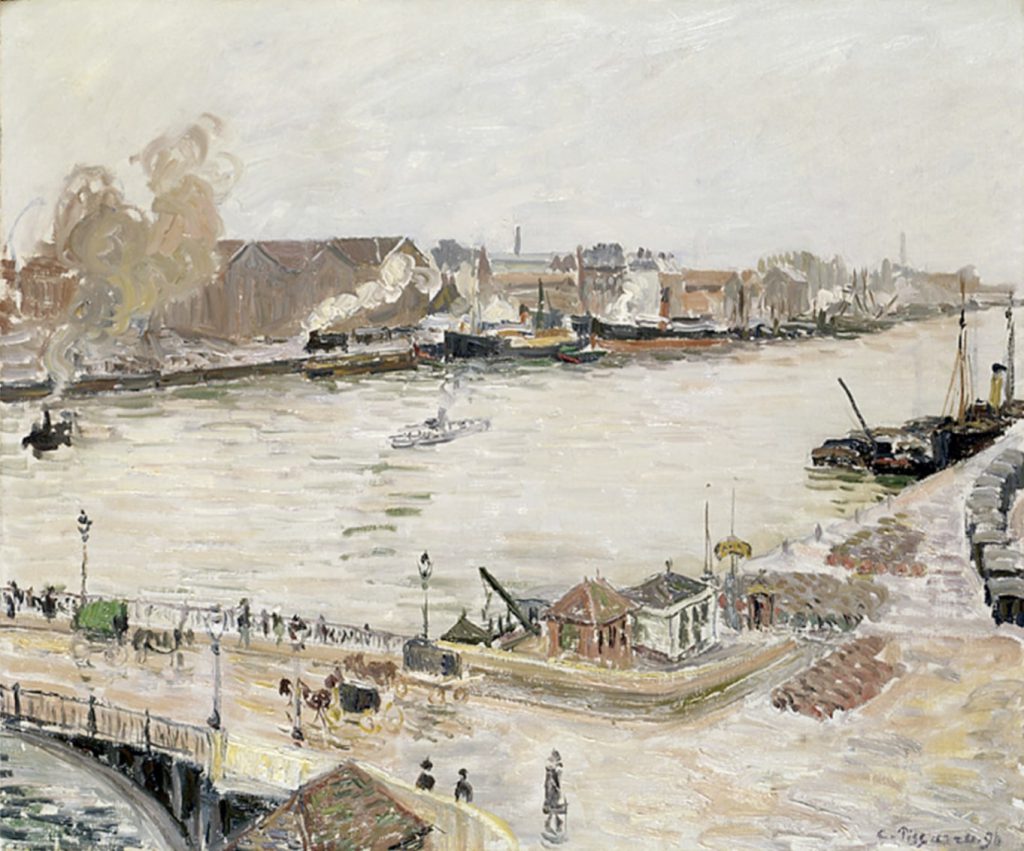Biographie
1830–1903

Born in the Danish West Indies, Camille Pissarro was a pioneer of Impressionism.
Aged twenty-five, Pissarro decided to pursue a career in painting and settled in France. Here he met Claude Monet, Auguste Renoir, Alfred Sisley and Frédéric Bazille, whose meetings at the legendary ‘Closerie des Lilas’ he joined. The group became known as ‘les intransigeants’, because their desire to invent a revolutionary way of painting had led them to depict impressions, sensations and light, whilst abandoning the traditional studio in favour of the so-called ‘plein-air’. Soon, contemporary critics named their practice and style ‘Impressionism’.
Slightly older than the rest of the group, the man who went by the sobriquet of ‘Le Père Pissarro’ (Father Pissarro) settled in 1866 in Pontoise, on the banks of the river Oise, from where he explored the surrounding countryside. Pissarro’s presence made this area of natural beauty into a haven for his fellow Impressionists and their followers.
Pissarro participated in all landmark exhibitions of the Impressionists held during 1874–1886. He gained recognition as one of the major figures of the movement. Contemporary critics recognized his enormous talent and agreed that he was ‘without doubt the most naive and realistic painter’ of the group.
Pissarro’s innate generosity and adventurous spirit led him to accompany and support the promising Paul Cézanne; he also took in the young Paul Gauguin who lived under his roof during the early 1880s. Pissarro’s encounter with the young painter Georges Seurat in 1885 guided him to adopt the new style of Neo-Impressionism using the technique of Divisionism (otherwise known as Pointillism) However, Pissarro found the scientific analysis of the perception of colour as the cornerstone of Divisionism lacking in spontaneity and returned to the freedoms of Impressionism. Sadly, Pissarro’s advancing eye disease forced him to give up ‘plein air’ painting in 1890. Pissarro continued to work on city views of Paris, Le Havre and Rouen, painted from the windows of his hotel room or his appartement on the Quai Voltaire in Paris, where he passed away on 13th November 1903.


